The 9 Greatest Years in the Life of Studio Ghibli
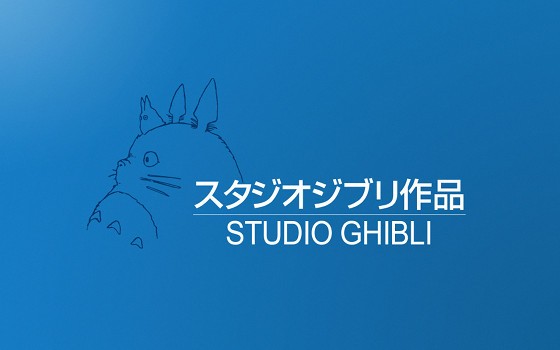 |
For all of the admittedly deserved praise Pixar has received for their stellar work on Inside Out (incidentally coming on the heels of Spirited Away‘s long-awaited Blu-ray release), we thought it was pertinent to delve into the other truly great animation power in the world. Where Disney and Pixar have long dominated the West, Studio Ghibli is undoubtedly held up as the pinnacle of eastern animation – at least when it comes to breaking out into the Western world with stories that don’t include bodacious and anatomically impossible heroines and colorful heroes.
With the recent limited release of the twentieth – and possibly final – Studio Ghibli film When Marnie Was There and renowned director and animator Hayao Miyazaki’s stated intention to retire, there is no better time than now to take a look back at some of the most pivotal years in the storied history of this unique and ambitious creator-controlled art house.
Helping me along this journey into Studio Ghibli’s past (re: bolstering or undoing my ramblings) are renowned anime experts and the authors of Studio Ghibli: The Films of Hayao Miyazaki and Isao Takahata, Michelle Le Blanc and Colin Odell.
1. 1984 – Nausica? and the Founding of an Artistic Empire
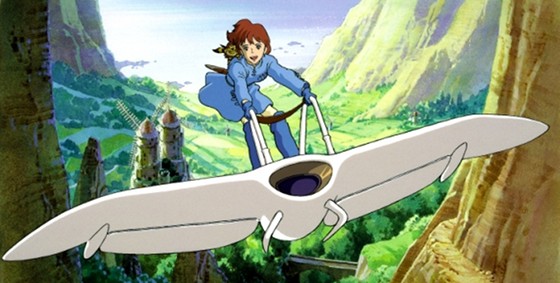 |
Ask any layman Ghibli fan – myself included, before doing my due diligence – to name the first project developed by Studio Ghibli and you’re likely to receive Nausica? of the Valley of the Wind as the confident reply.
Well, kind of yes and sorta no on that front; as it turns out, Nausica? was produced just before the founding of the studio and in fact played a large part in contributing to the development of said studio when Hayao Miyazaki and Isao Takahata joined forces to “blow a new wind through the industry.” (Rough translation of the etymology of the Arabic origins of the studio’s namesake.)
High production values, an unmistakably eastern flair and animation conducive to Disney-obsessed Western audiences allowed Nausica? to find solid success, giving Ghibli’s founders the confidence to take a leap of faith and forge the path ahead on their dream project.
As Le Blanc and Odell explain, however, former editor of Animage Magazine Toshio Suzuki played an essential role in the development of both Nausica? and the studio that would go on to introduce a pair of Japanese masters to the wide world. Additionally, Japan was experiencing something of an artistic golden age during the 1980s, priming the national market for big movers.
“The combination of an amazingly well constructed fantasy world, a strong central character, an environmental message and a story which was complex and emotional … made [Nausica?] a huge hit,” the authors explain.
As such, the project “provided Miyazaki not only with the finance but the confidence to establish Studio Ghibli.”
And aren’t we glad he did?
2. 1988 – Commanding Respect and Attention
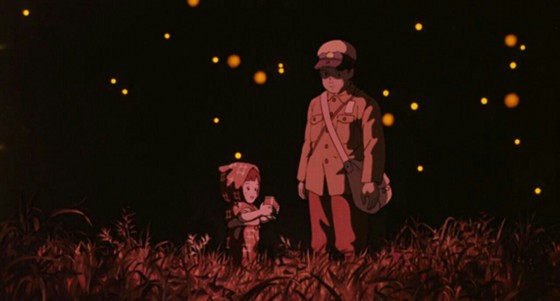 |
Castle in the Sky – a cult classic – was the first official Studio Ghibli project, but Miyazaki, Takahata and Suzuki’s ambition did not truly hit the scene until their second and third efforts hit theaters in 1988 with the duel release of Grave of the Fireflies and My Neighbor Totoro.
While not massive financial hits for the fledgling studio, the one-two punch represented by the tonally disparate Grave and Totoro – directed by Takahata and Miyazaki, respectively – stood as a marker of things to come. While Takahata took on the heartbreaking tragedy of war, Miyazaki introduced children and families to one of the enduring characters in Japanese pop culture, one that has even seeped into Western works such as the Toy Story franchise.
In hindsight, it seems like a bit of a misstep (ie: absolutely nuts) to have released such clashing films as a double feature, but it stands as a stark reminder that the founders of Studio Ghibli have always marched to the beat of their own drum.
According to Le Blanc and Odell, the impact of Grave of the Fireflies in particular cannot be overstated, as its “depth and emotional power … ensured that it remains a defining film from the studio, [being]considered a masterpiece by the critics who saw it.”
3. 1989 – Kiki Brings a Taste of Things to Come
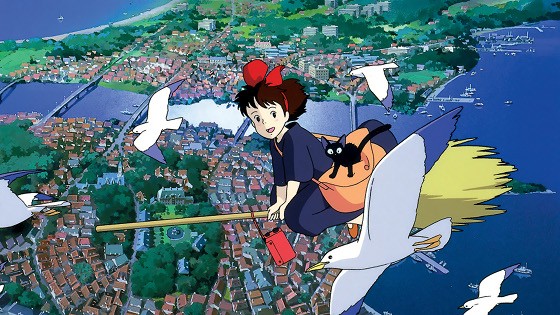 |
Totoro had serious legs, standing out on movie racks for decades after its initial run, but it was not until the 1989 release of Miyazaki’s Kiki’s Delivery Service that Studio Ghibli had its first big-time hit on its hands.
Topping the Japanese box office by a wide margin during the year, this film could easily sit alongside popular Disney animated fare from the ’60s on through the ’90s.
It could be argued that Kiki, while fantastic in its own right, was something of a safe play by the new studio, but that’s the cynical view to take. The movie is pure whimsy, allowing audiences to be whisked along with Kiki on her innocent and heartfelt adventure with nary an ulterior motive along the way.
In many ways, Kiki’s Delivery Service “helped define much of the studio’s later output,” according to Le Blanc and Odell, who reference the more “fantastical and magical” elements of the story that caused it to resonate with a larger audience.
Still, as we would come to discover in the late 90s, Ghibli was “not afraid to do something that is all too different if they feel the need,” especially when it came to more “confrontational” films dealing with environmentalism or the negative aspects of humanity.
4. 1995 – An American Apprentice Emerges
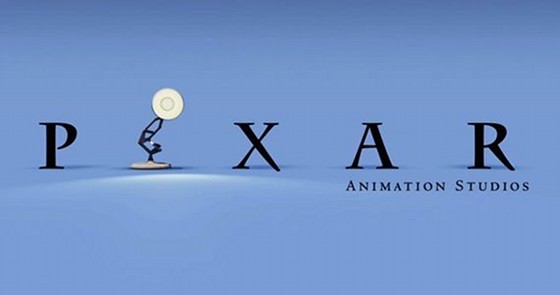 |
Animation headlines throughout the summer will undoubtedly focus on the unbridled success of Pixar as Inside Out roars through theaters with a simple-but-affecting premise. The newest film in the studio’s library hearkens back to their 1995 beginnings, when Toy Story ushered in something of a spiritual successor to Hayao Miyazaki and the Ghibli way.
In fact, Lasseter himself has stated countless times how profound an impact Ghibli’s films had on him as both artist and storyteller, going so far as to credit Miyazaki’s sequences as his ace in the hole when it comes time to motivate and inspire an international who’s-who in the artists’ room at Pixar.
Both Pixar and Ghibli have had their respective successes and failures, critically and commercially – though the latter are few and far between in both cases – but it is in the creative process where they share a core that emphasizes story and meaning over empty style, painting animation as a vehicle for expression rather than as a side effect of immature entertainment.
While Le Blanc and Odell reference the “vast differences in the animation techniques” of the two studios, they conclude that, ultimately, “both studios know how to tell a story and tell it well.”
Additionally, they see similarities in the risk-taking behavior of both companies, suggesting that, like Ghibli, “Pixar often tries to experiment,” refusing to “stick to the same formula” and bringing us a varied catalogue of unique animated efforts.
Perhaps the three defining characteristics of both studios, according to the authors, are their rare combination of “creativity, quality production values and … humanity.”
5. 1996 – Alliance with the Mouse House
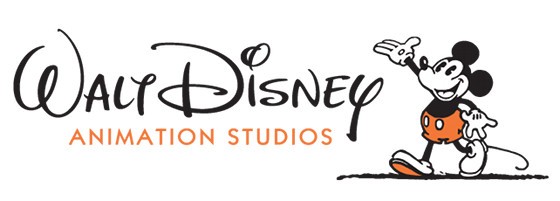 |
By 1995, Studio Ghibli had enjoyed its fair share of success on the back of several financial breakouts in a row, along with the confidence and poise that comes with not having a critical bomb – even a lukewarm reception, for that matter – to any of the eight films they had produced to that point.
Still, it always has and likely always will be the case in the business world at large that success breeds expansion, and while Ghibli’s preceding films had found limited exposure to Western audiences, it wasn’t until the late 1990s that the studio signed an exclusive distribution deal with Disney Animation ahead of the 1997 release of Princess Mononoke.
Prior to 1996, Ghibli’s international distribution deals tended to be negotiated or auctioned off on a project-by-project basis. They had formed alliances with giants such as FOX and Disney before, but exclusivity brought with it certain perks, and, as Le Blanc and Odell explain, certain fears.
As the authors tell it, Studio Ghibli was “cautious” when it came time to sign on the dotted line, and “quite rightly,” in their view, judging by “the way that Nausica? had been cut.” Because of their hairy past with Disney a decade before, Ghibli “insisted that the films be released as their makers intended,” with no exceptions.
This policy would come to be known as the “no cuts” agreement.
Still, Le Blanc and Odell can sympathize with a Western animation studio looking to – for lack of a better term – dumb down these films for Western audiences. They argue that, at the time of Nausica?’s release, “anime was virtually unheard of in Western countries,” and that “there is still a perception in Western countries that ‘cartoons’ are for children,” arguing that this has “never been the case for anime.”
It may seem like an obvious and somewhat unnecessary stance to take when it comes to international expansion, but as history would have it, Disney challenged this policy almost immediately just a year after signing the deal.
6. 1997 – Standing Firm in a Corporate Landscape
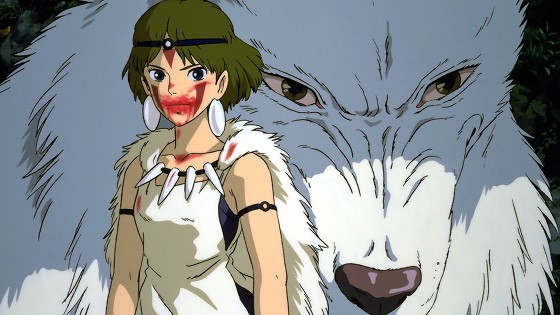 |
We’ll never know whether Disney agreed to the “no cuts” policy in good faith or if they never had any intention of following through from the start, but the first – and presumably last – conflict over that particular fine print came in the midst of the 1997 release of Princess Mononoke, undoubtedly one of the most beloved animated films of all time.
Legend has it that when Miyazaki discovered Disney’s intentions to edit his original cut of Princess Mononoke to make it more suitable (re: kid-friendly) for their audience, they (and by ‘they’ I mean none other than the infamous Harvey Weinstein) received a curt and somewhat forboding package in the mail courtesy of Miyazaki himself.
What did said package contain, you ask?
Why, nothing but a Japanese katana with a simple note attached that read, “No cuts.” As Le Blanc and Odell pointed out to me, Miyazaki confirmed the story in a 2005 interview with The Guardian.
Again, one can sympathize with what is ostensibly a children-friendly animation studio wanting to cut some scenes of extreme violence from Mononoke, but Miyazaki was firm and unyielding in his stance.
According to Le Blanc and Odell, Miyazaki had the last laugh. “Audiences have proved to be far more receptive than Western distributors gave them credit for as evidenced by the current popularity of Ghibli films and anime in general.”
If you’re looking for a defining story to sum up the artistic and personal principals of artist and studio, look no further than the old sword-in-the-mail bit.
7. 2002 – Spiriting Gold from the West
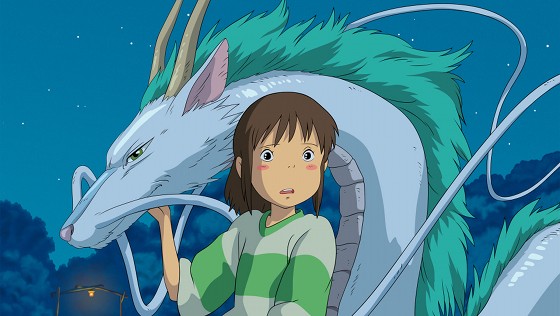 |
No offense to Isao Takahata’s 1999 family romp My Neighbors the Yamadas, but the next breakout hit for Studio Ghibli came in 2001 with what is widely considered to be Miyazaki’s defining masterpiece, Spirited Away.
If Princess Mononoke set a high bar, Spirited Away equaled it at the least and vaulted clean over it in the eyes of many. Apparently, that “many” includes the stuffy Western voters of the Academy of Motion Picture Arts and Sciences, who awarded the film an Oscar in 2002 in the “Best Animated Feature” category, the first and only Japanese anime film to be so honored in a category that has since come to be synonymous with the aforementioned Pixar.
Speaking on what could be considered the legacy moment of Studio Ghibli, Le Blanc and Odell go so far as to suggest that Spirited Away “was the film that brought anime to mainstream Western viewers who generally hadn’t been aware of the art-form.”
While they allow that rare breakouts did exist in the Western world, including 1988’s Akira and the aforementioned Mononoke, the inherent violence of those films limited their audiences. Spirited Away, on the other hand, with its young lead hero and family-friendly tone, jived with Western audiences in a way no other wide theatrical-release anime had before, bringing the studio to new heights of international popularity.
According to the authors, Miyazaki’s crowning achievement in the creation of Spirited Away was that he “managed to … blend … the familiar (an Alice in Wonderland style premise) with the extraordinary (encounters in an alluring yet terrifying environment).”
These unique properties struck a chord with virtually everyone who saw the film, propelling it into unlikely and extremely rarified air.
8. 2004 – One Last Howl at the Top
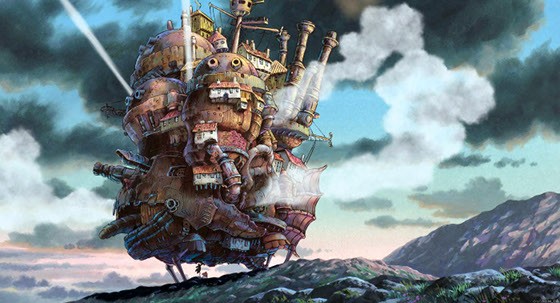 |
Howl’s Moving Castle, at once wildly successful and somewhat under-appreciated, arguably stands as the last true international success for Studio Ghibli. Although it did not come close to the earnings or acclaim garnered by Spirited Away, Howl earned over $200M at the worldwide box office and earned Miyazaki and Ghibli their second Academy Award nomination, which they did not cash in.
It could be argued that the relative dip in success for Ghibli’s ensuing films is owed in part to a small drop in quality, though the 2013 Miyazaki-Takahata double-header represented by The Wind Rises and The Tale of the Princess Kaguya certainly challenges that notion.
No, it isn’t a lack of quality that precipitated Ghibli’s steady decline following Howl, but if Le Blanc and Odell are to be believed (and why wouldn’t they be?) it could have a lot to do with subject matter.
“It is the fantasy films that tend to be more popular in Western countries,” they argue, “probably because animation is still largely perceived to be for the children and family markets.”
Additionally, the authors argue that, while stories such as Princess Mononoke, Spirited Away and Howl’s Moving Castle would be huge undertakings if attempted on a live-action scale, many of Ghibli’s later works have nothing inherently animated about their subject matter.
The authors also note that the two defining artists of Studio Ghibli – Miyazaki and Takahata – were far less active after 2004 than they had been up to that point. Hiromasa Yonebayashi, directory of Arrietty and When Marnie Was There, and Goro Miyazaki, director of Tales from Earthsea and From Up on Poppy Hill, represent talented directors that may not have exuded the same mastery of their craft, something the former directors honed over a period spanning decades.
9. 2013 and Beyond – Winds of the Future
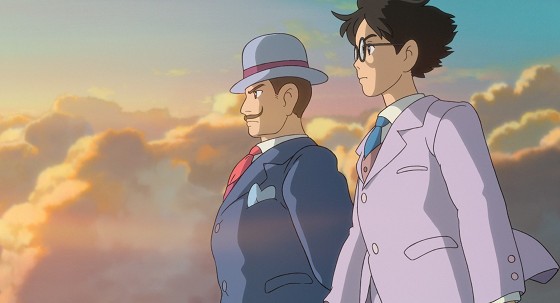 |
As was mentioned, Hayao Miyazaki’s swan song came with the 2013 release of The Wind Rises; later that year, Isao Takahata realeased the critically beloved The Tale of the Princess Kaguya. Both films are still master classes in the realm of animation, and both did nothing to slow the seemingly inevitable decline of Studio Ghibli.
In August of 2014, Miyazaki stated his intention to retire following a lengthy and creatively fulfilling career, and the studio may or may not be following in his footsteps. If Ghibli does fade away like the Mediterranean wind it was named after, it will have left behind a truly extraordinary catalogue of artistic gems.
According to Le Blanc and Odell, this narrative of everlasting appeal should take precedence over the understandable disappointment that the potential end of an era conjures.
“Times are changing and CGI is becoming the standard technique for animation rather than cel work,” they allow, while adding, “Whatever happens, the films that the studio has produced will remain timeless. After all, Disney’s Snow White is still eminently enjoyable nearly 80 years after it was made.”
The future of Studio Ghibli may be uncertain, but the past is evergreen and well-worth exploring. In short, do so, if you haven’t already.
Previously by Steven Kelliher
“8 Fantasy Book Series You Should Check out if You Love Game of Thrones”
“The 10 Best Video Game Cinematic Trailers (for Terrible Games) of All Time”
